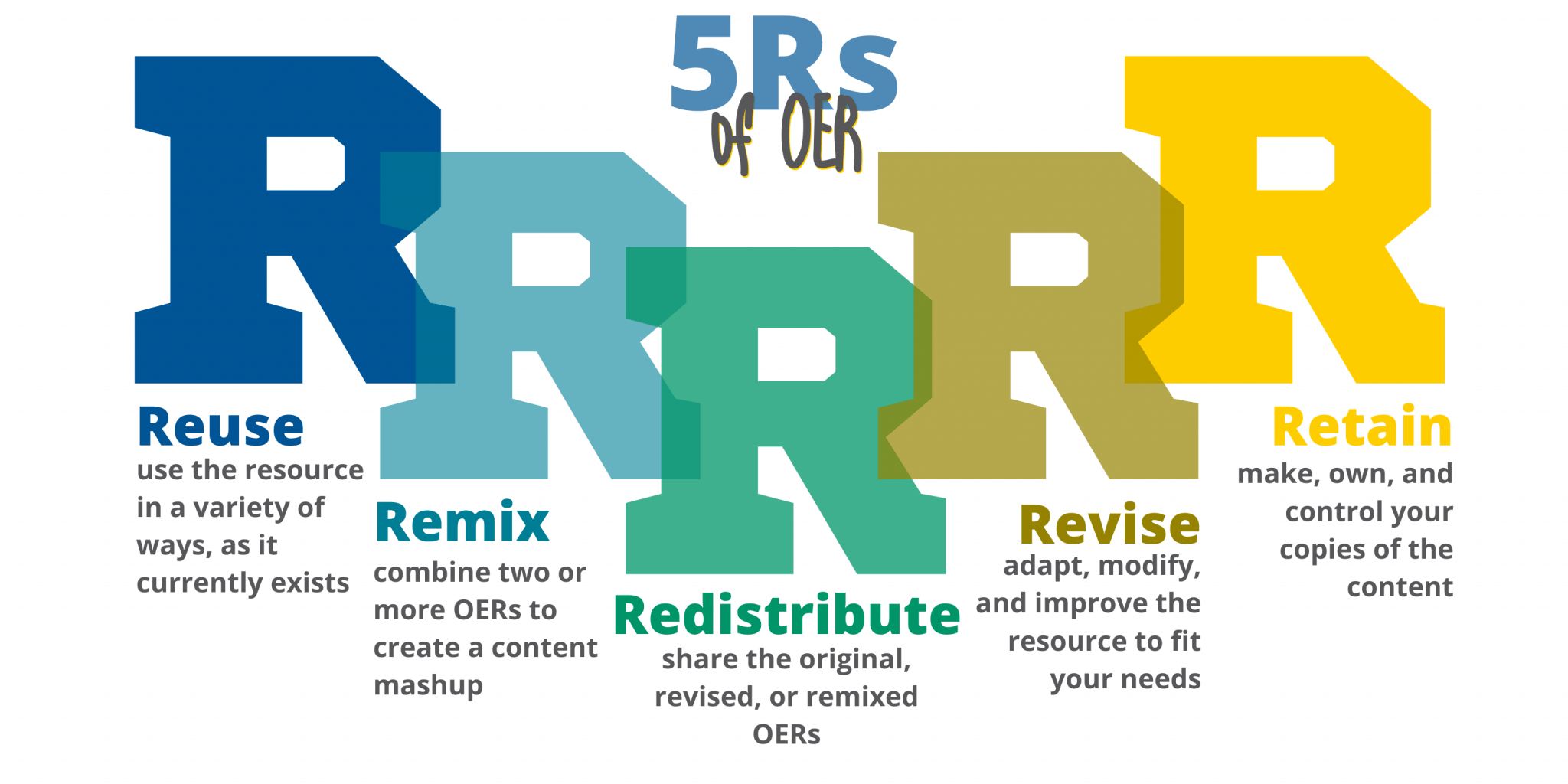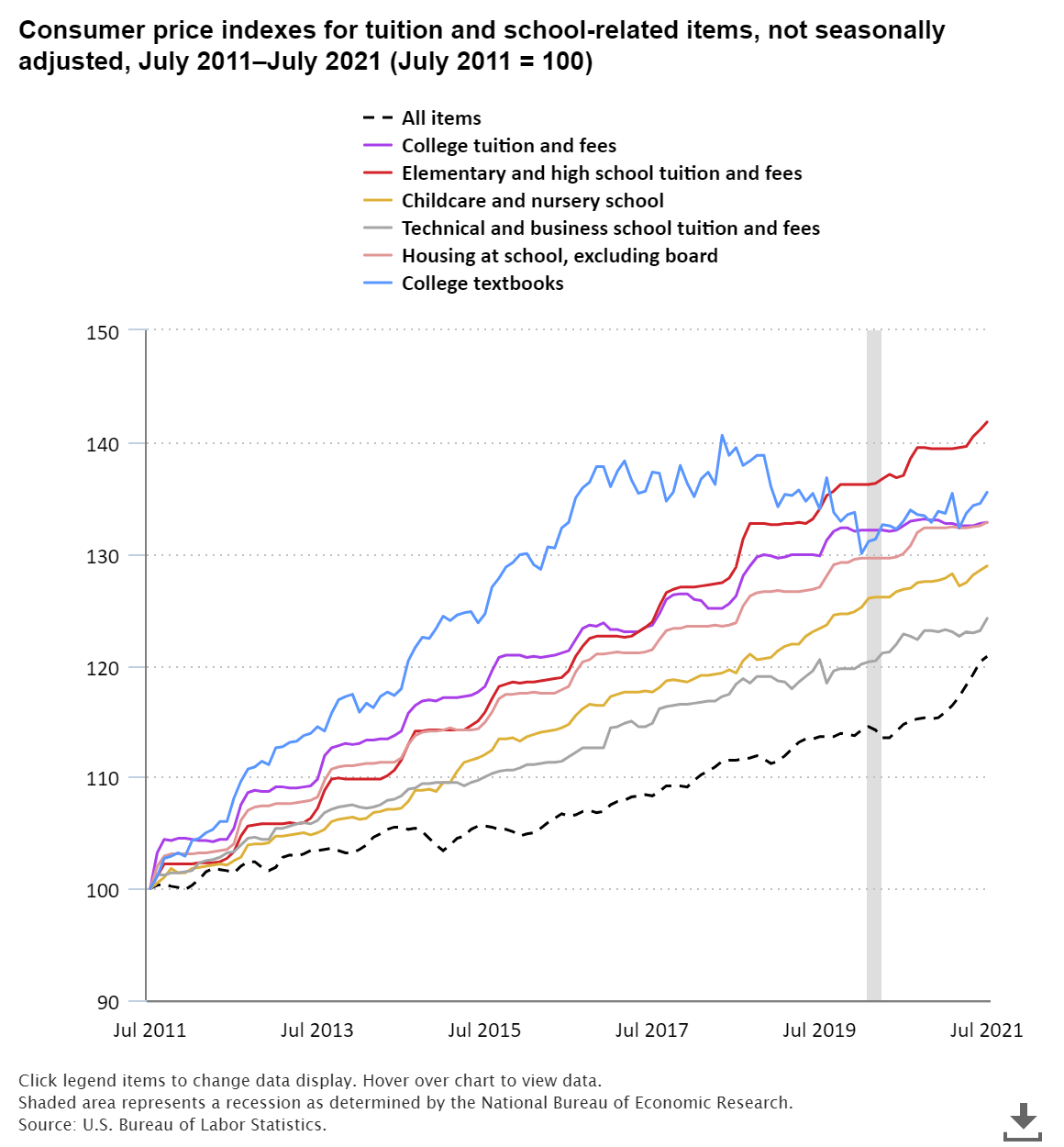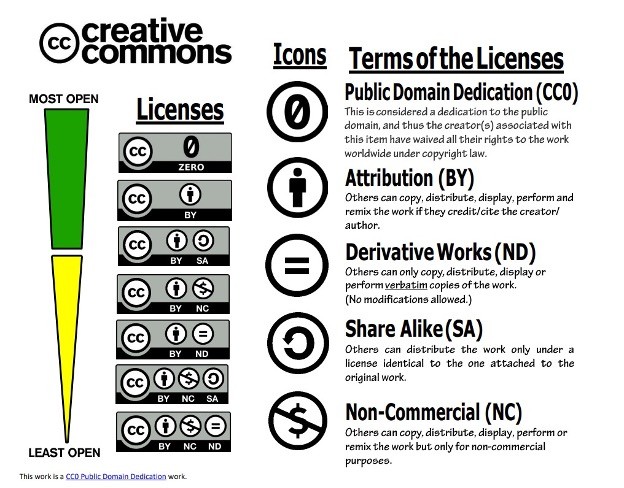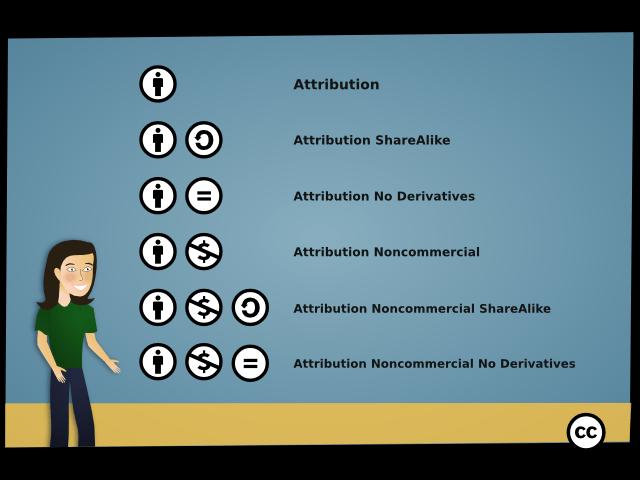Frequently Asked Questions
What is an Open Educational Resource?
The Texas Tech University Libraries Open Educational Resources Office defines open educational resources (OER) as teaching, learning, and research materials that are in the public domain or created under an open license that allow no, or limited, restrictions to access, use, and customization. These teaching and learning materials can include textbooks, tests, workbooks, modules, full courses, streaming videos, and any other materials or tools that support student academic support and learning.
When a resource is created under an open license, there are five points to determine
how that resource can be used. These five points are known as the "5 Rs of OER."
What do you mean OER allows customization?
The 5Rs of OER, specifically the revise and remix points, provide faculty with the ability to customize their course materials to fit the needs of their course as well as the needs of their students.
It is important to note that customization cannot be done for OER that are licensed as no derivatives.
Why adopt OER?
Student Affordability
While the cost of textbooks had begun to decline since reaching its peak in 2018, according to the US Bureau of Labor Statistics, prices have been steadily rising again since 2020.

A report published by Student PIRGs in 2021 noted that nearly 65% of students forgo purchasing required course materials and access codes due to financial constraints, food insecurity, and unreliable internet access.
The First Day of Class
Research estimates that the proportion of students who have the required course materials on the first day of class fell to 29% in 2020, an 11 point decrease in three years. Students having access to their course materials on the first day of class enables them to be prepared and can lead to greater academic success.
Many university bookstores are offering programs to ensure that students have their materials on the first day of class. While these programs are filling an important need, the cost of the textbooks is usually added as an additional course fee to the students' account. Though the upfront costs are eliminated, these additional course fees are typically added to the overall student loan totals that the student will eventually have to pay back. Unlike these programs, OER are always free and will not cost the student any money in the future.
Eliminating barriers
As the cost to higher education has increased, this rise in costs has disproportionately affected underrepresented, first generation, and low-income students. There are a number of barriers to higher education, but the cost of textbooks should not be one of those barriers and the use of OER can help address the barriers associated with attending college.
Speed of Content Creation/Revision
Since most OER content is born digital and is freely available to access at any point, content creators can quickly update their material to address student needs and discipline changes. This ability to quickly update content ensures that students will have the most up-to-date information for the subject material and will not have to wait for a new edition to come out.
What is an open license?
An open license allows the creator to establish permissions to users about how their work can be used. These permissions or rights are an expansion of the rights usually granted to users with traditional copyright. The most common open license is a Creative Commons License. Creative Commons has six different license types, listed from the most permissions available to other users, to the least number of permissions available.

OER that are created under an open license will usually have any number of the symbols printed in place of traditional copyright information. The symbols for the different types of Creative Commons Licensing are pictured below. These symbols tell you the permissions that the creator has set for this material. Make sure to check the permissions allowed within the Creative Commons License prior to revising an OER.

Whether you are looking to adopt an OER in your course or you are interested in creating an OER, it is important to understand open licensing to ensure that you are using and attributing the material correctly.
If you have questions regarding Creative Commons licenses, please contact us at libraries.oer@ttu.edu.
What if I want to create an open resource but I am not interested in having users customize my content?
Are open textbooks peer-reviewed?
Yes, in many cases. For example, peer review is part of the publishing process for OpenStax open textbooks. Whether peer review has/hasn’t been part of the publishing process, it’s essential for educators to bring their own expertise into consideration when evaluating open textbooks (like all educational materials). Completing a review or seeking out the review of a trusted peer of open textbooks can help ensure that all course materials meet the highest quality standards.
For open textbooks created by TTU faculty, we encourage and work with authors to have their materials undergo a peer-review process.
Aren't open access and OER the same thing?
Open access and OER are similar but they are not the same thing. Materials that students and faculty have access to through the University Libraries are also not usually OER. Below is a basic overview comparing OER, open access, and library licensed materials.
OER
- Related to teaching
- Useful for teaching, learning, and discourse
- Customization is permitted under an open license
Open Access
- Related to research
- Scholarly works created to advance scholarly conversation
- Customization is not usually permitted
Library licensed Material
- Related to research and teaching
- Materials paid for by the library and are made available to the campus community
- Customization is not permitted
What services does the OER Office offer?
- Help locate existing OER
- Help faculty create OER
- Encourage faculty to apply for grants and stipends that are available to them
- Provides presentations to faculty both 1:1 or in large groups
- Syllabus Review service
- Has consultations with faculty to answer any and all questions related to OER. If you’d like to schedule a consultation with the Online/OER Librarian, please reach out
University Libraries
-
Address
2802 18th Street, Lubbock, TX 79409 -
Phone
(806)742-2265 -
Email
libraries.website@ttu.edu







